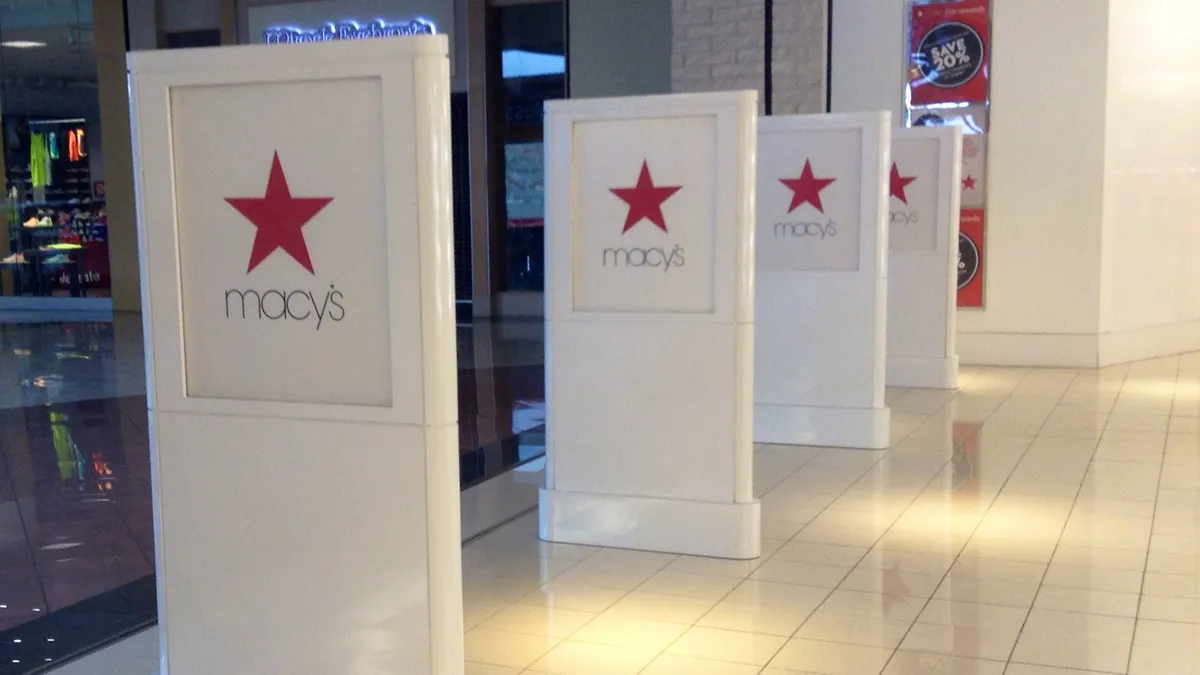Dive Brief:
-
Stitch Fix on Tuesday said its Q4 net revenue fell 12.4% year over year to $319.6 million; accounting for an extra week in its fiscal year, net revenue fell 18.3%. Number of active clients declined by 613,000 — down 19.6% year over year and 4.7% from the previous quarter — to 2.5 million.
-
Lower transportation costs helped push gross margin up 50 basis points to 44.6%. Net loss widened more than 27% to $36.5 million, according to financial filings.
-
For full fiscal year 2024, net revenue fell 16% to $1.3 billion, as net loss narrowed 25% to $128.8 million. Net revenue per active client at the end of the period was up 4.5%, reaching $533 from $510 a year ago.
Dive Insight:
CEO Matt Baer, who arrived over a year ago from Macy’s, is asking investors for another couple years of patience as Stitch Fix works to turn its fortunes around. The apparel box e-retailer is expected to return to growth by the end of fiscal year 2026, with revenue expected to again expand nearly 400 basis points in fiscal 2025, as it did in 2024, he said.
“As I've stated before, and we'll continue to share, transformations take time,” he told analysts during a conference call Tuesday. “And the methodical approach we're taking to our transformation is producing these results.”
Baer said that since his arrival, the company devised a turnaround based on three phases: rationalization, building and growth. A series of cost cuts — including layoffs and the closures of its U.K. business and a distribution center — sliced more than $100 million from its selling, general and administrative expenses in 2024 and have brought the company “squarely in the build phase of our transformation strategy.”
Much of that work is already underway, including changes to the customer experience and an updated logo. Stitch Fix has begun to include stylist photos and personalized notes in new digital style cards in some boxes, which has boosted engagement in that cohort by 12%, Baer said Tuesday. Customers will also be able to receive more than five items per box, he said. The company added two new private labels, which now make up about half its assortment, and may add more.
Executives had little to say about the consumer environment, emphasizing that they're focused on what they can control and are able to market to various segments in the Stitch Fix customer base. But the long trajectory of the company’s turnaround leaves some uncertainty about a quirky e-commerce model that was tried and abandoned by Nordstrom and others years ago, and which some observers have said isn’t really viable.
Early in the year William Blair analysts and other observers said Stitch Fix has an opportunity to lean into its tech abilities and customer touchpoints. In a Wednesday client note, William Blair analysts led by Dylan Carden called out bright spots in Stitch Fix’s report, including higher revenue per client, margins gains, cost savings and signs of success targeting higher lifetime-value clients. But there’s still uncertainty.
“The largest risk remains lack of visibility into the business and a potential turnaround in active customers, which could be more pronounced with any greater macro disruptions,” Carden said.














